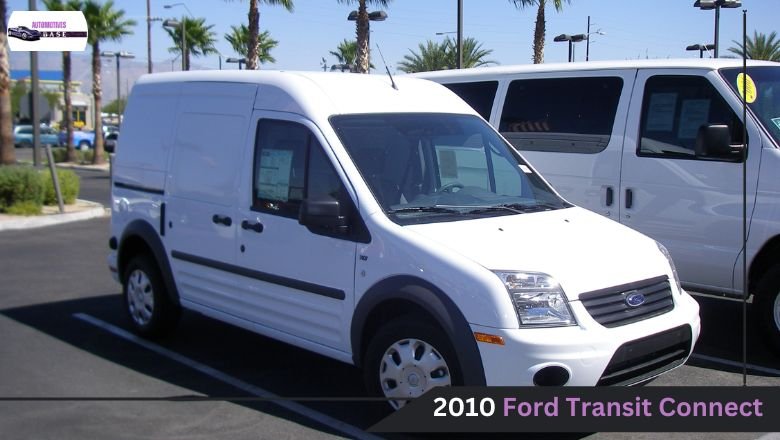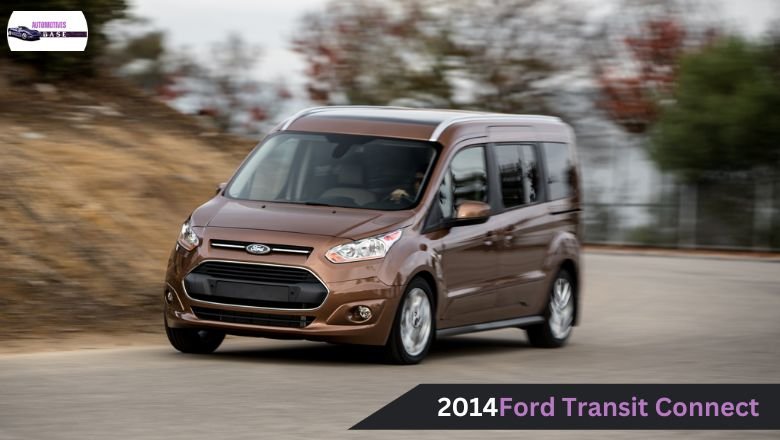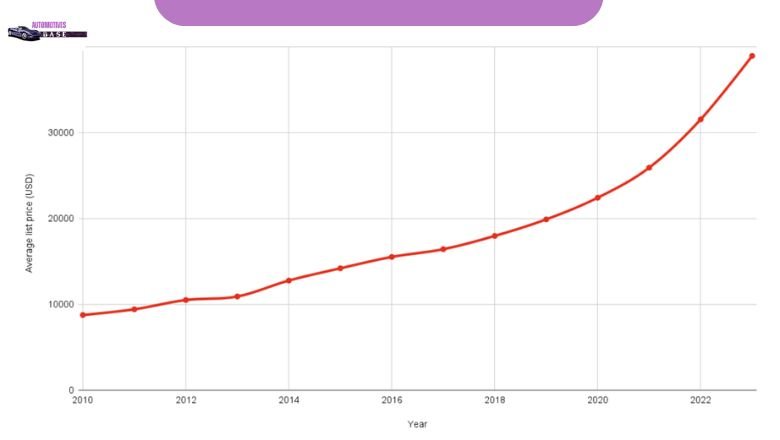This comprehensive guide breaks down the best and worst Ford Transit Connect years to make your decision-making process a breeze. We’ve analyzed each generation of the popular commercial van from 2010 to the present, drawing insights from reputable sources like NHTSA, Consumer Reports, and Kelley Blue Book.
If you’re focused on engine performance, safety features, reliability, or resale value, this article has got you covered with detailed evaluations and expert recommendations.
Ford Transit Connect Generations
The Ford Transit Connect has undergone several generations since its debut in 2009. The first model impressed with its compact size, offering easy maneuverability in city settings. It also featured a range of economical engine options that appealed to small businesses looking for efficiency. The versatile cargo space proved to be essential for transporting goods and equipment.
| Generations | Years |
|---|---|
| 1st generation | 2010-2013 |
| 2nd generation | 2014-2023 |
Ford has continued to improve the Transit Connect based on customer feedback. The latest models boast advanced technology features and enhanced safety systems, further solidifying its reputation as a reliable choice for small businesses and fleets. With each generation, Transit Connect remains committed to providing practical solutions for urban commercial use.
Understanding the distinctions between these generations can help potential buyers select the right Ford Transit Connect model that aligns with their specific transportation requirements and environmental goals.
Ford Transit Connect Best, Neutral, and Worst Years
When evaluating the best and worst Ford Transit Connect model years, we consider a range of factors, such as owner-reported reliability, annual maintenance costs, safety ratings, and various consumer satisfaction scores. These include data from sources like Consumer Reports, NHTSA recalls and complaints, as well as ratings from Edmunds, JD Power, Kelley Blue Book, VehicleHistory, and Cars.com.
By analyzing these metrics collectively, a comprehensive evaluation of the vehicle’s performance over different years is obtained. This approach allows for a detailed comparison of various aspects that impact the overall quality and reliability of specific Ford Transit Connect models.

During the neutral years, vehicles did not excel in terms of exceptional reliability but also did not face any major issues. Instead, they maintained a standard level of quality and satisfaction among customers. Factors like NHTSA recalls had a negative impact on our rankings.
A higher number of complaints and recalls often signaled lower reliability for the vehicle. This reinforces the importance of closely monitoring safety and performance issues to ensure customer satisfaction and trust in the brand. Moving forward, conducting thorough research and addressing any concerns promptly will be crucial to maintaining customer loyalty and brand reputation in the automotive industry.
Best And Worst Ford Transit Connect Years, 1st Generation (2010–2013)
The first generation of the Ford Transit Connect, introduced from 2010 to 2013, represented Ford’s foray into the compact commercial van segment. It was designed to cater to urban businesses in need of efficient and versatile transportation options.

The model years 2011 Ford Transit Connect and 2012 Ford Transit Connect stand out as the best performers for the Ford Transit Connect. These years offered improved reliability, performance, and overall satisfaction for drivers.
The Best Years: 2011, 2012
The 2011 and 2012 Ford Transit Connect models stand out as the top years in this generation. Equipped with a 2.0L I4 engine producing 136 hp, paired with a 4-speed automatic transmission, these models offered a blend of power and efficiency ideal for city driving and cargo transport. They boasted an impressive fuel economy, averaging 21 MPG in the city and 25 MPG on the highway.
Available in Ford Transit Connect XL and Ford Transit Connect XLT trims, in both Ford Transit Connect cargo and wagon variants, these models cater to various business requirements. Safety features like airbags, anti-lock brakes, and stability control ensured peace of mind for drivers.
The Neutral Years: 2013
In 2013, the Ford Transit Connect maintained its 2.0L engine and 4-speed automatic transmission, offering reliable performance consistent with previous years. Unfortunately, this model faced challenges such as coolant leaks caused by cracked engine cylinder heads, prompting a major recall in 2017 to address the issue.
Concerns arose regarding the risk of unintended rollaway incidents due to detached shift cables, resulting in another recall for safety reasons. These setbacks, the Ford Transit Connect remained a popular choice among customers seeking a versatile and efficient vehicle for their business or personal needs. The neutral year of 2013 marked a time of both continuity and challenges for the Ford Transit Connect line-up.
The 2013 Ford Transit Connect model continued to uphold its reputation for practicality and versatility, making it a top choice for commercial purposes. With a range of trims and configurations available, businesses could customize the vehicle to suit their specific needs. This flexibility made the Transit Connect well-suited for various urban commercial applications, from delivery services to mobile workshops.
The model’s design enhancements ensured optimal space utilization without compromising on performance or efficiency. Its compact size allowed for easy maneuverability in city traffic while still offering ample cargo space.
The Worst Years: 2010
The 2010 Ford Transit Connect faced numerous teething problems during its launch, making it one of the least reliable options in its generation. Owners commonly reported significant electrical issues, particularly with power door lock actuators, as well as safety concerns related to potential rollaway risks.
These issues had a significant impact on the overall perception of the reliability and safety of the 2010 model. As the first model introduced to the North American market, it lacked some refinements present in later versions. Due to these initial challenges, the 2010 Transit Connect is considered a less preferred choice for individuals in need of a dependable compact commercial van.
Best And Worst Ford Transit Connect Years, 2nd Generation (2014-2023)
The second generation of the Ford Transit Connect introduced significant enhancements in design and technology, making it a popular choice for small businesses and fleet operators. The years 2017, 2018, and 2021-2023 stand out as the best years for this model, offering improved performance and reliability. These versions feature advanced safety features, upgraded interior amenities, and more efficient engines to meet diverse transportation needs.

The initial years of the second-generation Ford Transit Connect—specifically, 2014 to 2016—saw some shortcomings that led to decreased overall satisfaction among users. Common issues during these years included subpar build quality, lackluster performance, and inconsistent reliability ratings. To ensure optimum value and longevity when considering a Ford Transit Connect from this generation, it is advisable to steer clear of models produced between 2014 and 2016.
The Best Years: 2017, 2018, 2021, 2022, and 2023
The best years for the Ford Transit Connect are 2017, 2018, and the latest models from 2021 to 2023. These years introduced enhanced engine options such as the 2.5L I4 (2017, 2018), the new 2.0L I4 with 162 hp, and the efficient 1.5L EcoBlue diesel engine. An upgrade to an 8-speed automatic transmission improved fuel economy and gear shifting. These models boast impressive fuel efficiency, with up to 24 city and 27 highway MPG.
Safety features were bolstered with standard additions like forward collision warning and automatic emergency braking in these years. Higher trims like the Titanium offer advanced infotainment systems with larger touchscreens, connectivity features, and luxurious Ford Transit Connect interior finishes, making them stand out for comfort and technology.
The Neutral Years: 2019, 2020
The 2019 and 2020 models of the Ford Transit Connect are considered neutral years, maintaining similar engine choices and the 8-speed automatic transmission for consistent driving performance. These models are known for their good fuel economy and a range of trim levels, from the basic XL to the luxurious Ford Transit Connect Titanium, appealing to both commercial and personal users.
Some owners reported transmission issues like rough shifting into lower gears. Necessary recalls addressed concerns such as engine overheating and detached shift cables leading to unintentional rollaway risks. The Transit Connect remains a popular choice for its versatility and overall performance during this period.
The Worst Years: 2014, 2015, and 2016
The years 2014, 2015, and 2016 were particularly troublesome for the second-generation Ford Transit Connect. These models saw an alarming number of recalls and owner complaints due to various issues. Owners faced problems with the electrical system, powertrain, and structure, such as instrument cluster failures, door latch issues, and transmission issues like slipping and rough shifting.
Recalls were frequent for inoperative instrument clusters, cracked engine cylinder heads causing oil leaks, fuel pump failures, and the risks of unintentional rollaway incidents. These recurrent issues tarnished the reputation of the 2014–2016 Ford Transit Connect models as the least reliable in their generation.
Ford Transit Connect Resale Values
The graph displays the average resale values of the Ford Transit Connect throughout its various model years. It offers a clear visual representation of how the vehicle’s value holds up over time in the used car market.

By examining the data on the graph, potential buyers can make informed decisions when considering purchasing a Ford Transit Connect. The resale values of different model years can vary based on factors such as mileage, condition, and market demand.
Conclusion
When considering the best and worst Ford Transit Connect years, it is evident that certain model years stand out as more reliable and well-performing than others. The years 2011, 2012, 2017, 2018, and the range of 2021–2023 have proven to be solid choices for buyers seeking a dependable vehicle.
Potential buyers should be cautious when looking at models from 2010 and between 2014-2016, as these years have been associated with various issues. By carefully selecting a model from the recommended years, consumers can ensure a smoother driving experience and potentially avoid costly repairs down the line.
FAQ`s
What Year Is The Bad Ford Transit Connect?
The year of the problematic Ford Transit Connect is mainly between 2013 and 2021, following the 2012 redesign. Apart from the initial transmission issues reported in some models during this time period, there have also been concerns about safety related to the park mode function. This led Ford to issue a recall early in 2021 for over 192,000 vehicles to address the risk of them rolling away while supposedly in park.
What Is The Most Common Problem With A Ford Transit Connect?
One of the most prevalent issues that Ford Transit Connect owners may encounter is related to the transmission system. The transmission plays a crucial role in transferring power generated by the engine to the wheels, enabling smooth and efficient operation of the vehicle. When problems arise within the transmission, it can lead to noticeable performance issues and potentially costly repairs.

